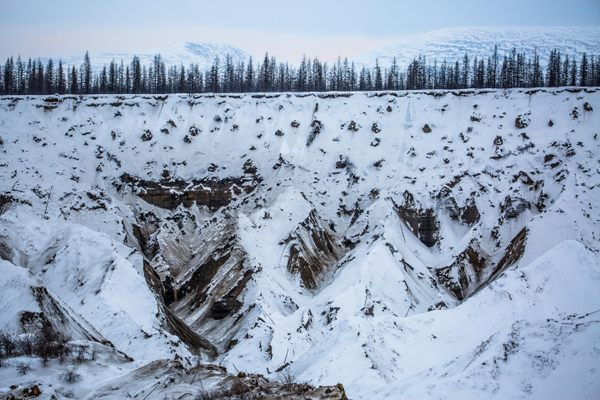A Massive Sinkhole Dropped 200 Million Gallons of Radioactive Water Into the Ground
It’s the second giant sinkhole to open at this Florida plant.
At a Florida fertilizer plant, a sinkhole 45 feet in diameter and 300 feet deep opened up in the ground—right underneath a giant pool of wastewater. More than 200 million gallons of contaminated water rushed down, into the aquifer that underlies Florida and provides drinking water for people across the state. The water is polluted with a phosphogypsum, a weakly radioactive byproduct of making phosphorous fertilizer.
The sinkhole opened up in late August; it was three weeks before the news was made public. As the Tampa Bay Times reports, the law does not require public notification until there’s evidence that contaminated water has migrated off site (which hasn’t happened yet).
DEP: No legal requirement to notify neighbors of phosphate plant’s sinkhole https://t.co/JRSnLBJhHW via @TB_Times
— Sarah Laskow (@slaskow) September 21, 2016
The company says water in the aquifer moves slowly, and it’s working to clean up the spill; neighbors, naturally, are nervous and are taking the company up on its offer to test their well water for contamination.
This is the second giant sinkhole to open up on this site. In 1994, a sinkhole 160 feet wide at the surface opened beneath a stack of phosphogypsum; investigators determined it was connected to an erosion cavity that went 400 feet down into the soil. It was described as “planet Earth’s first moon crater.”
Central Florida is home to large fertilizer production facilities because of its natural deposits of phosphate, discovered in the 19th century, in the Bone Valley region, where the land is a sandy mix of phosphate pebbles, clay, and fossils. In this area, the dirt also includes naturally occurring uranium, which remains behind in the phosphogypsum byproduct of fertilizer product.
Environmentalists have been worried for years about the danger of accumulating waste from fertilizer production; it doesn’t help that Florida is prone to sinkholes. From an industrial perspective, one giant sinkhole every 30 years could be considered acceptable, but no one wants to be the neighbor who has to worry about a giant hole next door leaking uranium into the groundwater.








Follow us on Twitter to get the latest on the world's hidden wonders.
Like us on Facebook to get the latest on the world's hidden wonders.
Follow us on Twitter Like us on Facebook